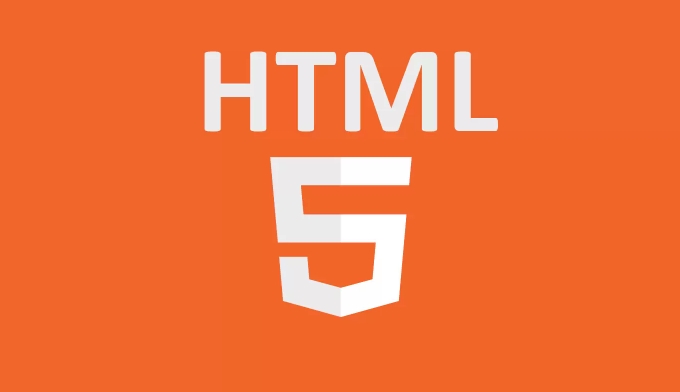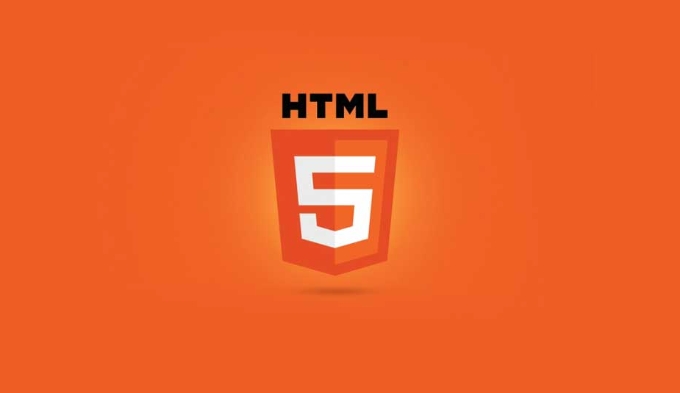WebSockets is a key technology for real-time applications, providing persistent two-way communications that are more efficient than polling. 1. It is an HTML5 protocol, allowing clients and servers to send data to each other at any time; 2. When using it, the front-end establishes connections and listens to events through several lines of code, and the back-end needs to cooperate with a library that supports WebSocket; 3. Application scenarios include chat rooms, stock updates, online games, collaborative documents, etc.; 4. When using it, pay attention to the cross-domain, reconnection mechanism, and message formats unified into JSON and encryption protocol wss://.

Real-time applications are very common now, such as chat rooms, online collaboration tools, real-time data monitoring panels, etc. To implement these features, HTML5 WebSockets is a very practical technical choice. It provides a durable, bidirectional communication channel that is more efficient and responsive than traditional polling methods.

What are WebSockets?
WebSockets is a network communication protocol provided by HTML5, allowing a long-term connection between the client and the server to conduct two-way data transmission through this connection. Unlike HTTP request-response mode, once a WebSocket connection is established, both parties can send data at any time.
To give a simple example: the stock price you see on a web page is updated in real time, and it is likely that WebSocket is working. It does not require the browser to constantly request new data, but it pushes it directly when the server updates.

How to use WebSockets in a project?
To use WebSockets on the front end, you only need a few lines of code to establish the connection:
const socket = new WebSocket('ws://example.com/socket');
You can then listen for connection opening, receiving messages, error handling, and connection closing events:

-
socket.onopen: Triggered when the connection is successfully established. -
socket.onmessage: fired when a message is received from the server. -
socket.onerror: Triggered when an error occurs. -
socket.onclose: Triggered when the connection is closed.
Sending messages to the server is also very simple:
socket.send('Hello Server!');
It should be noted that the server side also needs to support the WebSocket protocol. Common backend technologies such as Node.js (with ws library), Python websockets or Django Channels can be easily implemented.
Frequently Asked Questions and Precautions
Although WebSockets is powerful, there are some things that are easy to ignore in actual use:
- Cross-domain issues : WebSocket is also restricted by the same-origin policy, and requires the server to configure CORS or use a proxy to resolve it.
- Connection remains : The connection may be interrupted when the network is unstable. It is recommended to add a reconnection mechanism.
- Message format : It is recommended to use JSON format to pass data uniformly to facilitate front-end parsing.
- Security : Use the encrypted
wss://protocol to prevent man-in-the-middle attacks.
If your application is deployed on HTTPS, WebSocket must also use wss:// , otherwise the browser will block the connection.
Examples of practical application scenarios
In addition to the aforementioned live chat and stock market, WebSocket is also suitable for:
- Player status synchronization in online games
- Collaborative document editing (such as multiple people editing Google Docs at the same time)
- Real-time notification system (such as message push from social platforms)
This kind of scenario has one thing in common: data needs to flow quickly and continuously between clients and servers, and WebSocket just satisfies this.
Basically, that's not complicated to use, but it can indeed bring about an improvement in experience. As long as the front and back ends are coordinated, it is not difficult to achieve a true real-time function.
The above is the detailed content of Building Real-time Apps with HTML5 WebSockets. For more information, please follow other related articles on the PHP Chinese website!

Hot AI Tools

Undress AI Tool
Undress images for free

Undresser.AI Undress
AI-powered app for creating realistic nude photos

AI Clothes Remover
Online AI tool for removing clothes from photos.

Clothoff.io
AI clothes remover

Video Face Swap
Swap faces in any video effortlessly with our completely free AI face swap tool!

Hot Article

Hot Tools

Notepad++7.3.1
Easy-to-use and free code editor

SublimeText3 Chinese version
Chinese version, very easy to use

Zend Studio 13.0.1
Powerful PHP integrated development environment

Dreamweaver CS6
Visual web development tools

SublimeText3 Mac version
God-level code editing software (SublimeText3)

Hot Topics
 Adding drag and drop functionality using the HTML5 Drag and Drop API.
Jul 05, 2025 am 02:43 AM
Adding drag and drop functionality using the HTML5 Drag and Drop API.
Jul 05, 2025 am 02:43 AM
The way to add drag and drop functionality to a web page is to use HTML5's DragandDrop API, which is natively supported without additional libraries. The specific steps are as follows: 1. Set the element draggable="true" to enable drag; 2. Listen to dragstart, dragover, drop and dragend events; 3. Set data in dragstart, block default behavior in dragover, and handle logic in drop. In addition, element movement can be achieved through appendChild and file upload can be achieved through e.dataTransfer.files. Note: preventDefault must be called
 Getting user location with HTML5 geolocation API
Jul 04, 2025 am 02:03 AM
Getting user location with HTML5 geolocation API
Jul 04, 2025 am 02:03 AM
To call GeolocationAPI, you need to use the navigator.geolocation.getCurrentPosition() method, and pay attention to permissions, environment and configuration. First check whether the browser supports API, and then call getCurrentPosition to obtain location information; the user needs to authorize access to the location; the deployment environment should be HTTPS; the accuracy or timeout can be improved through configuration items; the mobile behavior may be limited by device settings; the error type can be identified through error.code and given corresponding prompts in the failed callback to improve user experience and functional stability.
 Using ARIA attributes with HTML5 semantic elements for accessibility
Jul 07, 2025 am 02:54 AM
Using ARIA attributes with HTML5 semantic elements for accessibility
Jul 07, 2025 am 02:54 AM
The reason why ARIA and HTML5 semantic tags are needed is that although HTML5 semantic elements have accessibility meanings, ARIA can supplement semantics and enhance auxiliary technology recognition capabilities. For example, when legacy browsers lack support, components without native tags (such as modal boxes), and state updates need to be dynamically updated, ARIA provides finer granular control. HTML5 elements such as nav, main, aside correspond to ARIArole by default, and do not need to be added manually unless the default behavior needs to be overridden. The situations where ARIA should be added include: 1. Supplement the missing status information, such as using aria-expanded to represent the button expansion/collapse status; 2. Add semantic roles to non-semantic tags, such as using div role to implement tabs and match them
 Securing HTML5 web applications against common vulnerabilities
Jul 05, 2025 am 02:48 AM
Securing HTML5 web applications against common vulnerabilities
Jul 05, 2025 am 02:48 AM
The security risks of HTML5 applications need to be paid attention to in front-end development, mainly including XSS attacks, interface security and third-party library risks. 1. Prevent XSS: Escape user input, use textContent, CSP header, input verification, avoid eval() and direct execution of JSON; 2. Protect interface: Use CSRFToken, SameSiteCookie policies, request frequency limits, and sensitive information to encrypt transmission; 3. Secure use of third-party libraries: periodic audit dependencies, use stable versions, reduce external resources, enable SRI verification, ensure that security lines have been built from the early stage of development.
 Integrating CSS and JavaScript effectively with HTML5 structure.
Jul 12, 2025 am 03:01 AM
Integrating CSS and JavaScript effectively with HTML5 structure.
Jul 12, 2025 am 03:01 AM
HTML5, CSS and JavaScript should be efficiently combined with semantic tags, reasonable loading order and decoupling design. 1. Use HTML5 semantic tags, such as improving structural clarity and maintainability, which is conducive to SEO and barrier-free access; 2. CSS should be placed in, use external files and split by module to avoid inline styles and delayed loading problems; 3. JavaScript is recommended to be introduced in front, and use defer or async to load asynchronously to avoid blocking rendering; 4. Reduce strong dependence between the three, drive behavior through data-* attributes and class name control status, and improve collaboration efficiency through unified naming specifications. These methods can effectively optimize page performance and collaborate with teams.
 Using HTML5 Semantic Elements for Page Structure
Jul 07, 2025 am 02:53 AM
Using HTML5 Semantic Elements for Page Structure
Jul 07, 2025 am 02:53 AM
Using HTML5 semantic tags can improve web structure clarity, accessibility and SEO effects. 1. Semantic tags such as,,,, and make it easier for the machine to understand the page content; 2. Each tag has a clear purpose: used in the top area, wrap navigation links, include core content, display independent articles, group relevant content, place sidebars, and display bottom information; 3. Avoid abuse when using it, ensure that only one per page, avoid excessive nesting, reasonable use and in blocks. Mastering these key points can make the web page structure more standardized and practical.
 HTML5 video not playing in Chrome
Jul 10, 2025 am 11:20 AM
HTML5 video not playing in Chrome
Jul 10, 2025 am 11:20 AM
Common reasons why HTML5 videos don't play in Chrome include format compatibility, autoplay policy, path or MIME type errors, and browser extension interference. 1. Videos should be given priority to using MP4 (H.264) format, or provide multiple tags to adapt to different browsers; 2. Automatic playback requires adding muted attributes or triggering .play() with JavaScript after user interaction; 3. Check whether the file path is correct and ensure that the server is configured with the correct MIME type. Local testing is recommended to use a development server; 4. Ad blocking plug-in or privacy mode may prevent loading, so you can try to disable the plug-in, replace the traceless window or update the browser version to solve the problem.
 Embedding video content using the HTML5 `` tag.
Jul 07, 2025 am 02:47 AM
Embedding video content using the HTML5 `` tag.
Jul 07, 2025 am 02:47 AM
Embed web videos using HTML5 tags, supports multi-format compatibility, custom controls and responsive design. 1. Basic usage: add tags and set src and controls attributes to realize playback functions; 2. Support multi-formats: introduce different formats such as MP4, WebM, Ogg, etc. through tags to improve browser compatibility; 3. Custom appearance and behavior: hide default controls and implement style adjustment and interactive logic through CSS and JavaScript; 4. Pay attention to details: Set muted and autoplay to achieve automatic playback, use preload to control loading strategies, combine width and max-width to achieve responsive layout, and use add subtitles to enhance accessibility.






